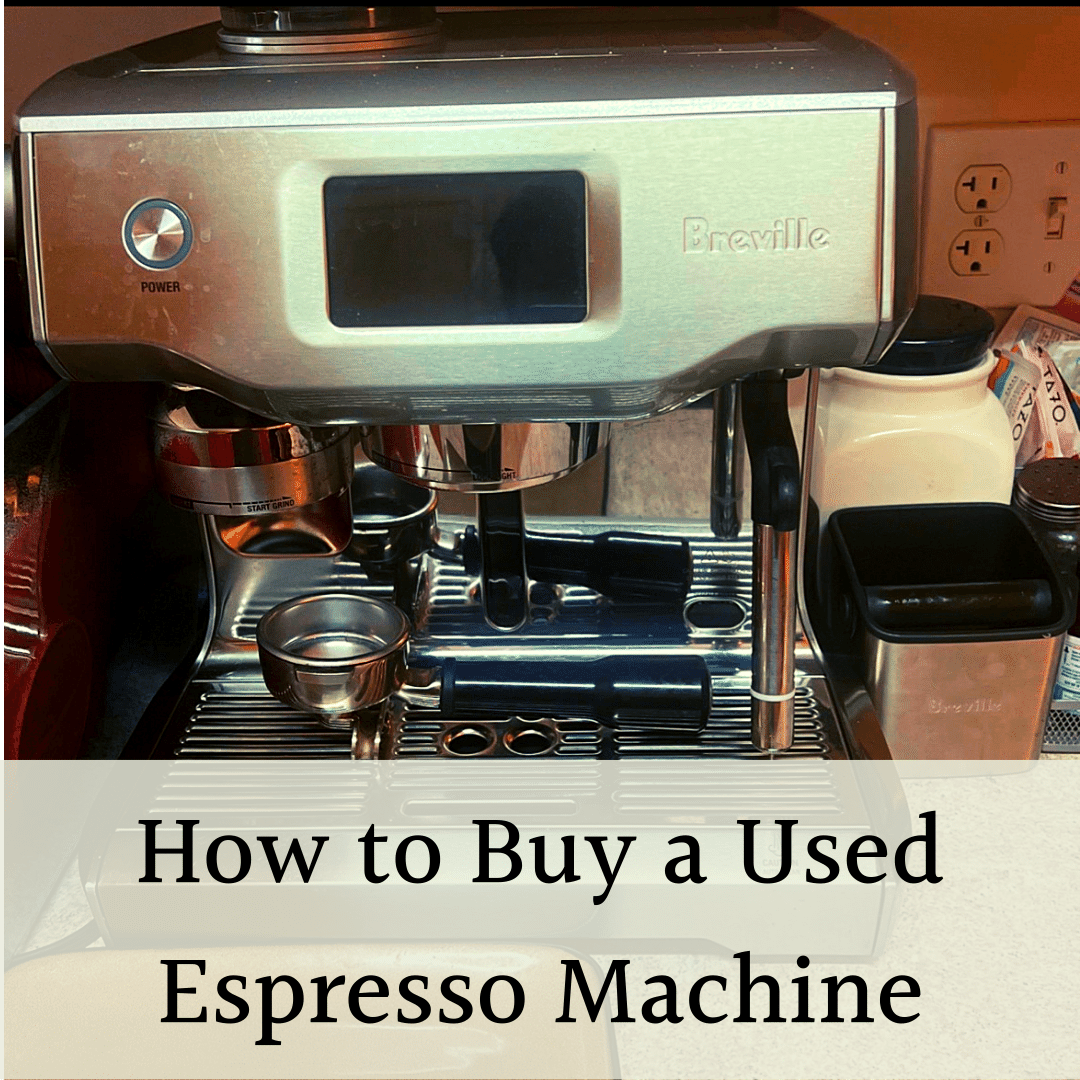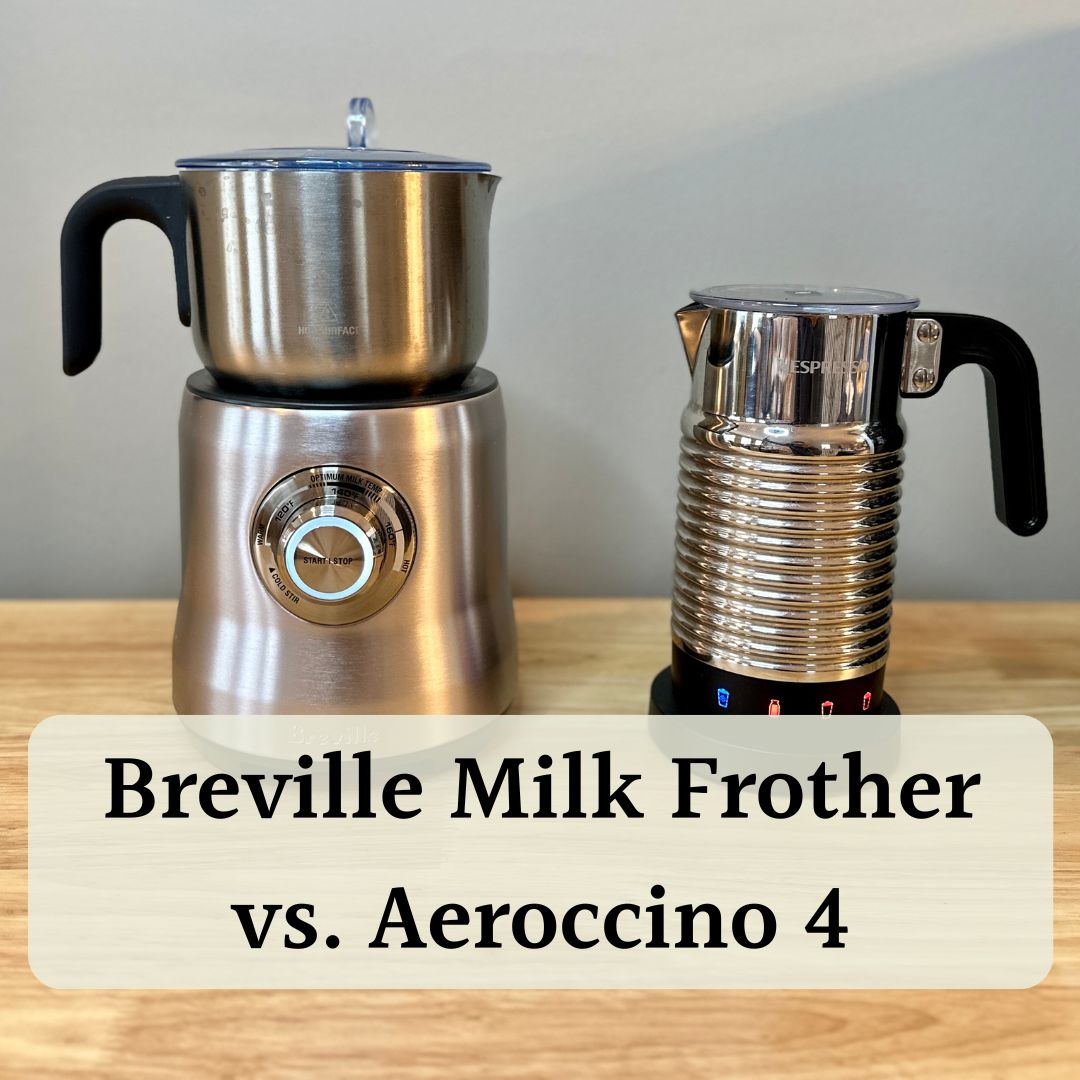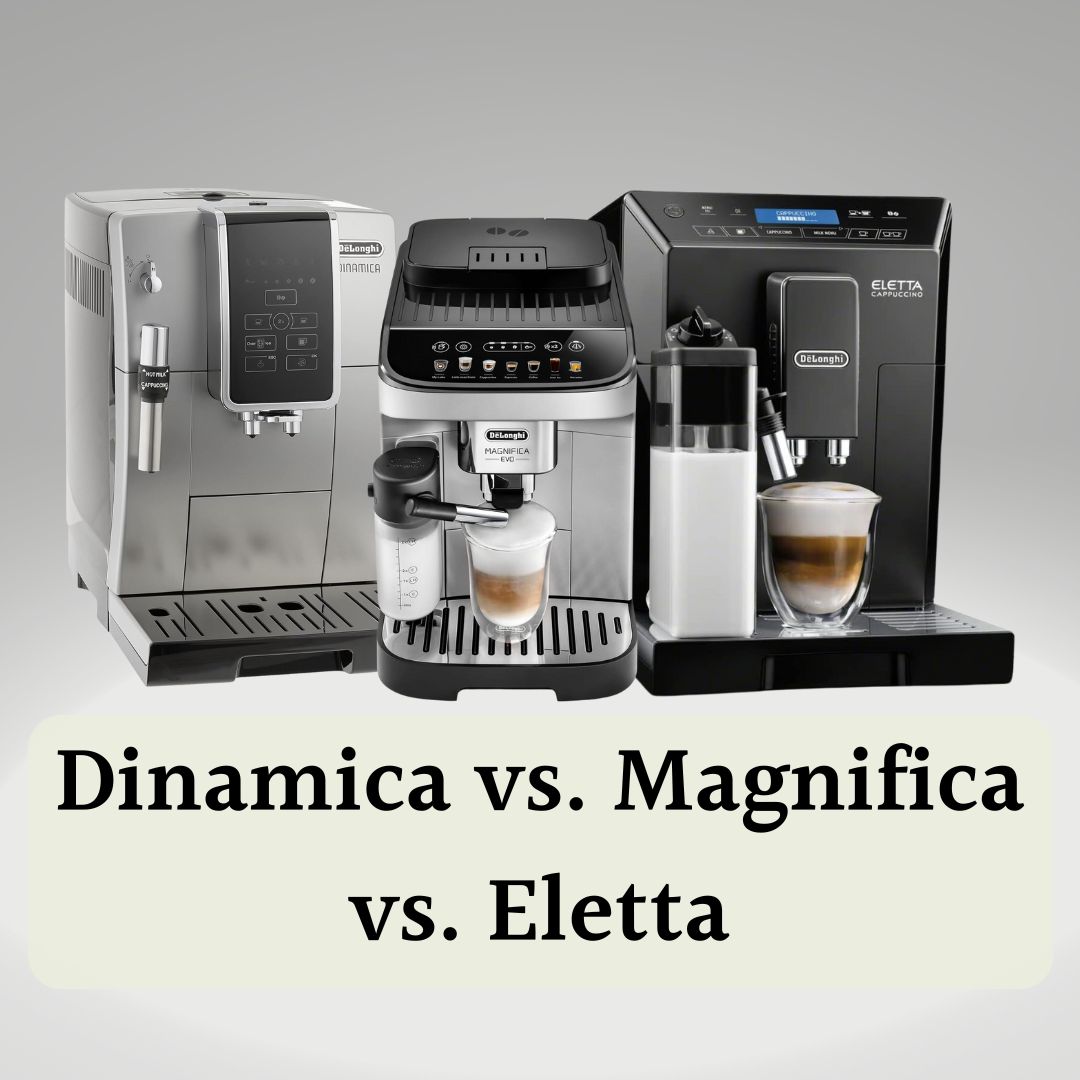Craving a cafe-quality espresso at home without breaking the bank? Dive into my roundup of the top seven espresso machines under $1,000. Spoiler alert: Breville Barista Touch steals the show with its auto steam wand and integrated grinder.
(Note: Since this guide was crafted, the Barista Touch got a bit pricier due to inflation. 💸)
My new top three favorites under $1,000 are:
- Rancilio Silvia (Best espresso quality)
- Breville Barista Pro (Best overall)
- Breville Barista Express Impress (Best ease of use)
From super-automatic marvels to other stellar picks, I’ve got you covered. Here’s my list of the top seven espresso machines under $1,000. Plus, stick around for a tailored buying guide to ensure you’re fully equipped to pick your perfect match
Top Seven Espresso Machines Under $1,000
| Image | Product Name | Features | Price |
|---|---|---|---|
Best espresso quality 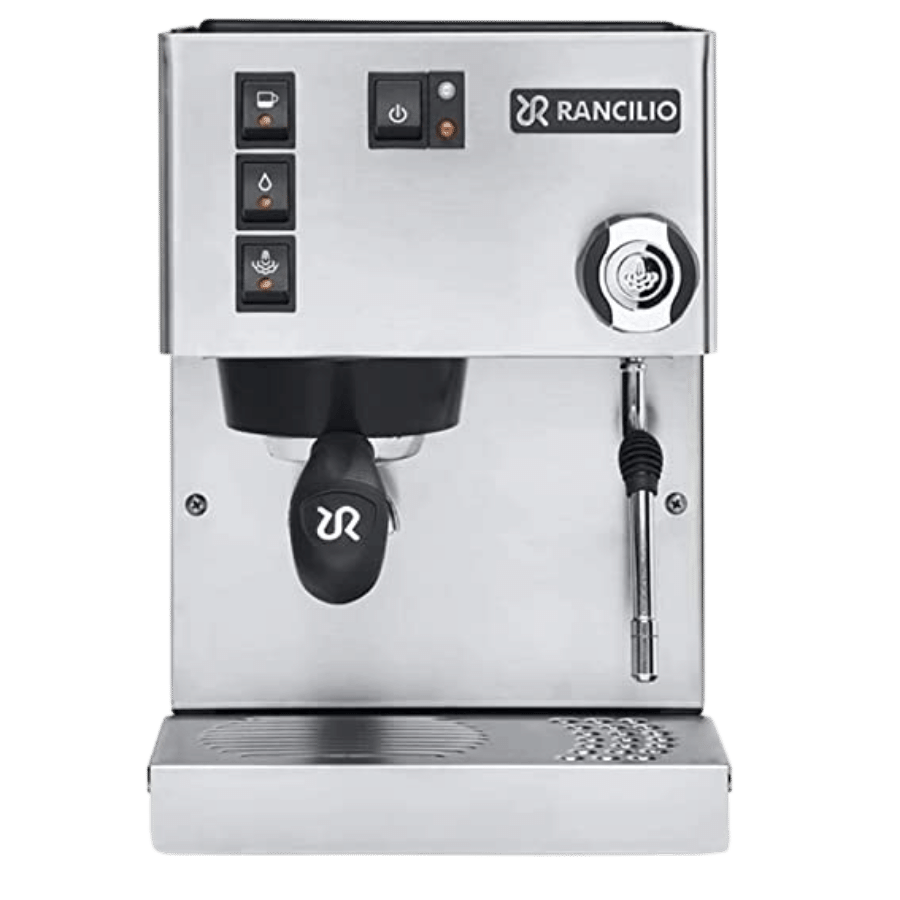 |
| Check Amazon | |
Top Pick 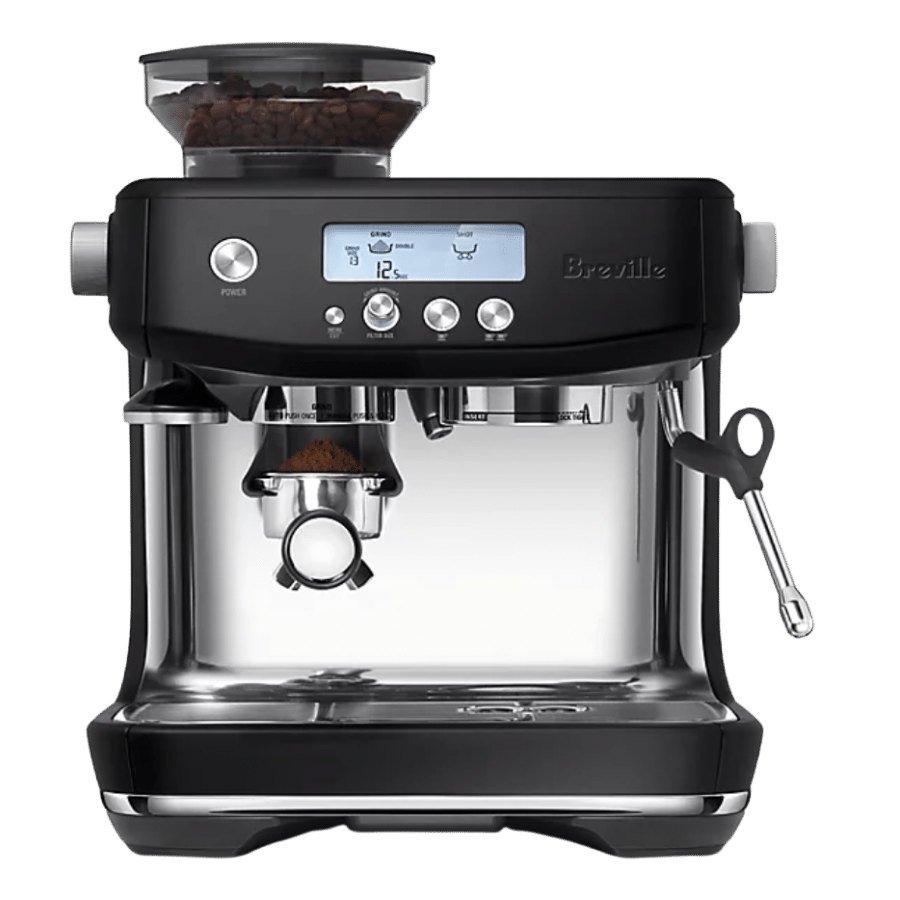 |
| Check Amazon | |
Best ease of use 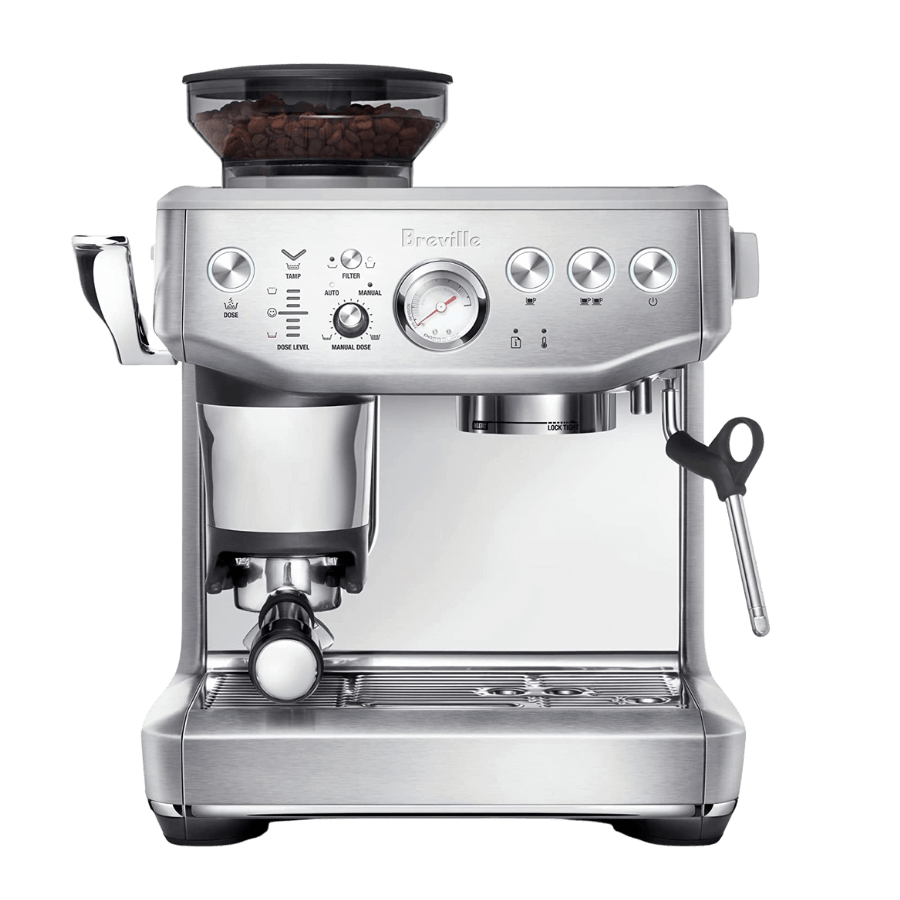 |
| Check AmazonCheck Breville | |
Best super-automatic  |
| Check Amazon | |
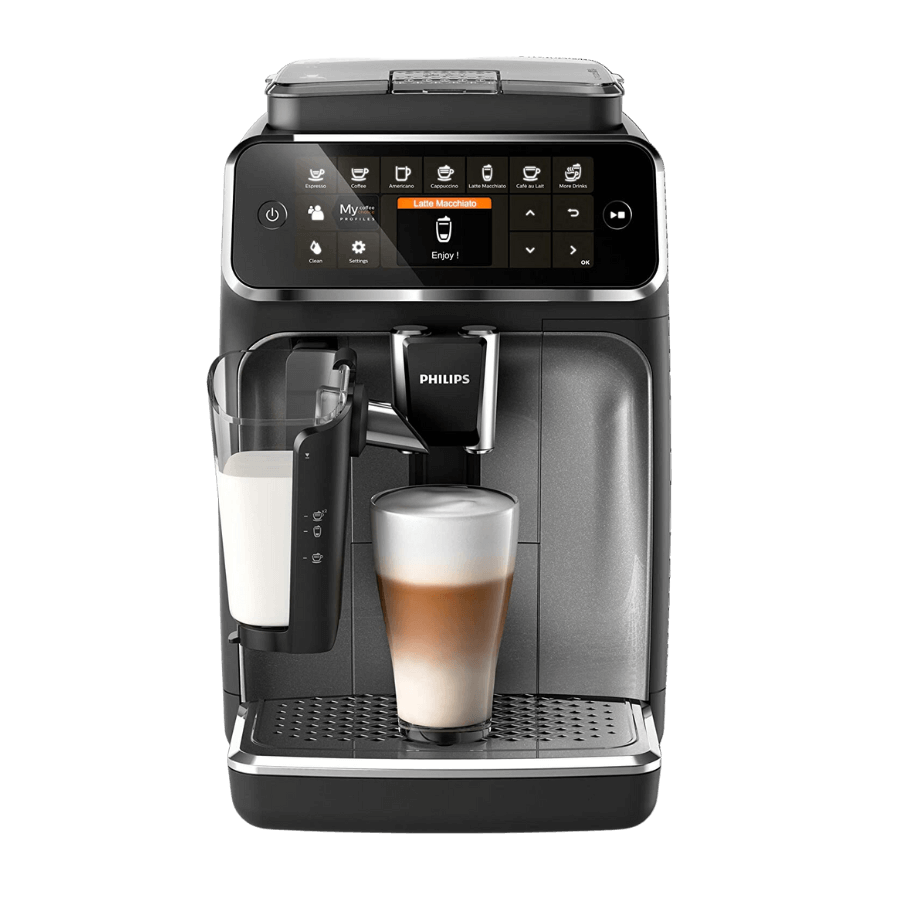 |
| Check Amazon | |
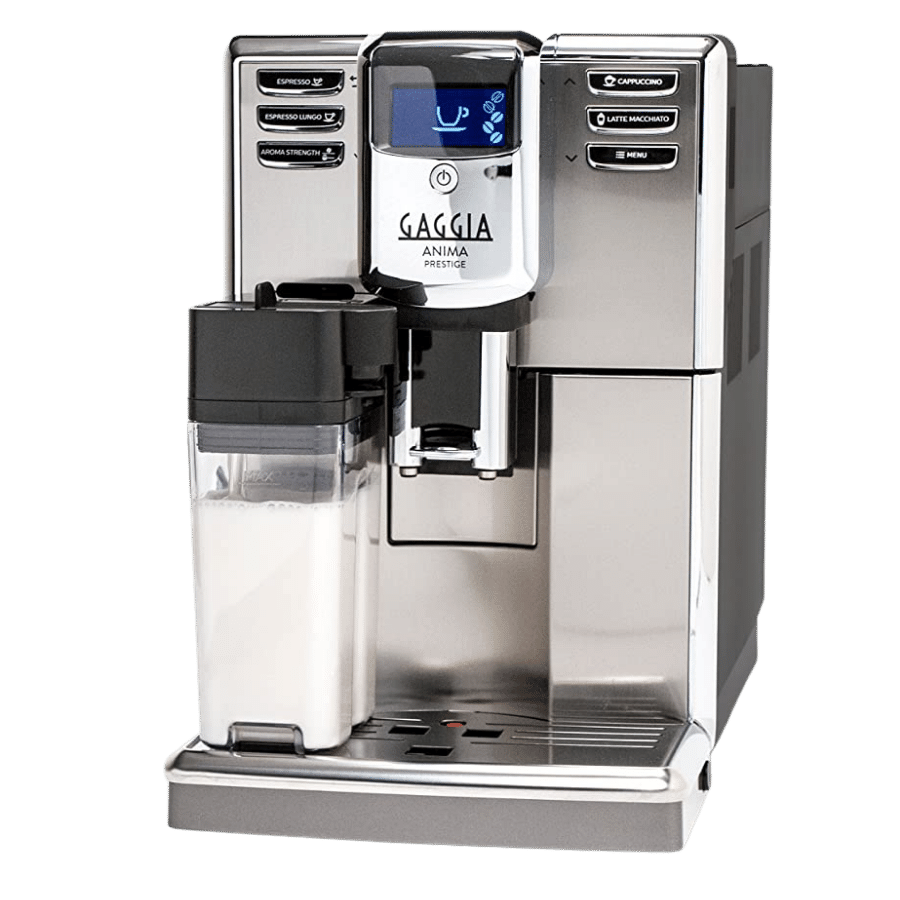 |
| Check Amazon | |
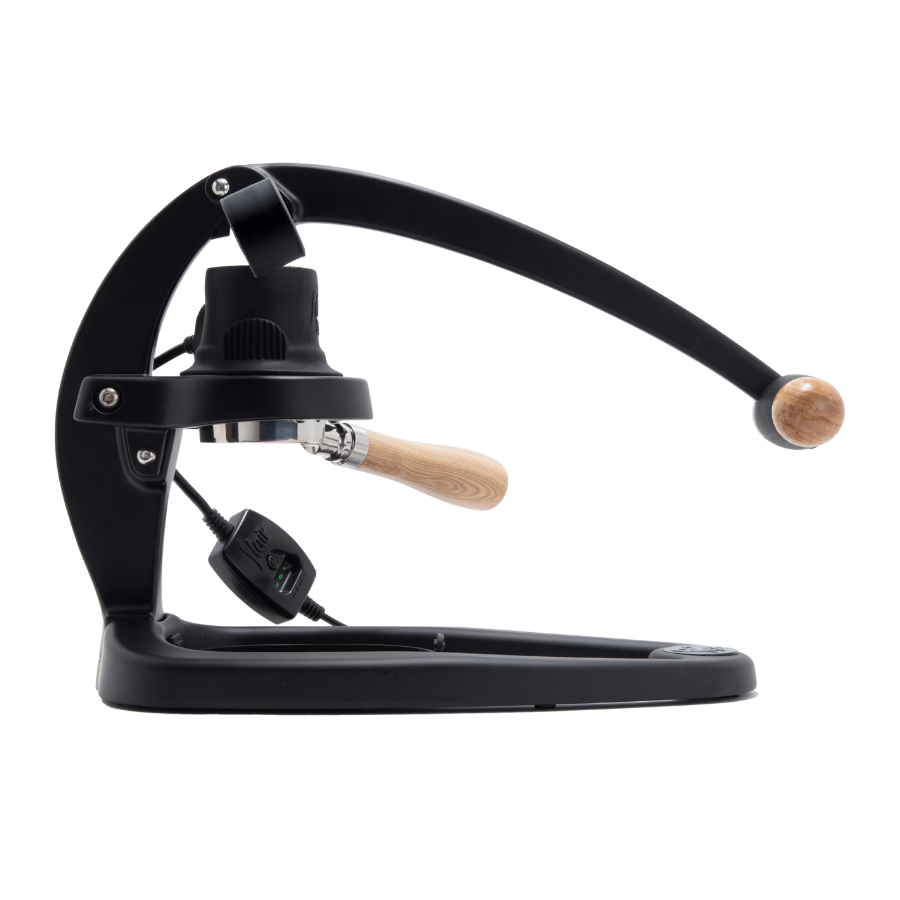 |
| Check Prima Coffee |
1. Rancilio Silvia

Rancilio Silvia highlights:
- Semi-automatic espresso machine
- 58mm portafilter
- Single boiler with connected group head for temperature stability
- Professional steaming knob controls pressure
Rancilio Silvia has been around for more than 20 years, and it’s one of the most popular home espresso machines. This device will last for years and produce quality espresso.
The build is impressive — it’s made of an iron frame and stainless steel panels. There’s a brass boil burner that’s lead-free and thermal-wrapped. “Miss Silvia” is built like a tank with great resale value since they are easy to service.
The single boiler heating system stands out in Silvia. It can hold 10 oz, which is one of the largest available on the market for home espresso machines, especially under $1,000. A large boiler means you’ll have a very stable water temperature for an even espresso extraction. Combined with the larger commercial brew head, this machine makes some of the best espresso for a three-digit budget.
This coffee machine also comes with a commercial-grade group head, and a 58mm Rancilio patented portafilter. The portafilter is ergonomic, with a nice rubber coating around the handle. It’s also beautiful with a flush basket to the bottom of the portafilter.
One drawback of the Rancilio Silva boiler size is it takes around 10-15 minutes to heat up initially, which is longer than most machines. That’s the price of the large boiler, but it pays off in the espresso quality. I recommend using an outlet plug so you can set it to start before you wake up.
Silvia also has a flexible stainless-steel steamer. You have a full range of motion and can produce steamed milk in different milk containers. It’s very powerful, injecting a lot of air into the milk for a good foam, and is ready in 30-40 seconds.
Who is it for? Rancilio Silvia is a perfect espresso machine if you’re looking for a long-term investment, as it’s built to last for years. It has a professional steam wand for latte art but requires some work on the user’s part, so there’s a learning curve.
Check our full Rancilio Silvia review.
Pros
Large single boiler system for good temperature control
58mm portafilter
Excellent bottomless portafilter
Cons
No grinder
Long heat up time
No PID controller
2. Breville Barista Pro

Breville Barista Pro highlights:
- Semi-automatic espresso machine
- Thermojet heating system
- Integrated conical burr grinder
- High-pressure steam wand
Breville Barista Pro is my next pick for the best espresso machines under $1,000. Barista Pro has an impressive ThermoJet heating system that heats water via internal pipes in an aluminum block. The water reaches 190o F in three seconds, which is amazingly fast, especially seeing as many other espresso machines need at least a minute or more.
However, one drawback of Pro’s heating system is that you must flush water through the brew head to preheat. This means the start time is a little slower but still quite fast, especially if you need to pull multiple shots.
A stable temperature is achieved thanks to the PID. PID is a digital temperature control system that ensures the water temperature remains stable, so you can have consistent extraction every time.
Barista Pro also has low-pressure pre-infusion, which pushes water through the beans at a lower temperature. This hydrates the coffee grounds, and the puck is in a perfect state for extraction. You get a flavorful espresso with a rich crema.
Another feature that I loved on Barista Pro is the grinder. This espresso machine comes with an integrated conical burr grinder with 30 settings. The extra settings provide more flexibility to dial in the espresso and get the right grind size for your beans. It’s also easy to use with a side dial.
Place the portafilter under the grinder, tap it in, and you’ll get a preset amount of grinds. There’s less mess with the holder, and eventually, you’ll find the grind time that gets the exact weight you need, which also saves time from using a scale.
The Barista Pro is easy to use. There is an LCD on the front panel where you can program the water temperature, shot volume, and pre-infusion time for one and two-cup sizes.
Lastly, the milk wand has four holes instead of the standard one hole and easily achieves high pressure, which means it can create a good microfoam in about 30 seconds. You can even work on your latte art.
Who is it for? Breville Barista Pro is a good choice for both beginners and professional baristas. It’s easy to start pulling great shots while leaving room to learn and perfect the craft. But, this isn’t the best choice if you already have a grinder. You’ll end up paying for a feature you already have.
Check out our full Breville Barista Pro review.
Pros
Built-in grinder with 30 settings
Thermojet heating system has 3 seconds heat up time
Four-hole steam wand creates good microfoam
PID and pre-infusion guarantee optimum extraction
Cons
You have to flush the brew head before every shot
No cup warmer tray
3. Breville Barista Express Impress

Breville Barista Express Impress highlights:
- Built-in grinder with 25 settings
- Assisted tamping
- Intelligent dosing
Stepping into the spotlight next is the Breville Barista Express Impress. Just beneath that $1,000 mark, this machine packs a punch. First off, I was stoked about its assisted tamping and dosing. If you’re not a pro-barista, this feature is a blessing. Say goodbye to guessing and hello to precision.
At its heart is the internal automatic tamper, ensuring every puck is pressed just right. You’ll notice a large cylindrical part on the machine. This is the tamping piston, which uses 22 pounds of pressure each time it tamps. You press down on the machine’s arm, and the piston automatically aligns with the portafilter to tamp.
The great thing about the automatic tamping is that the machine can correct itself. If the tamping is done right, you’ll see a smiley face on the display. If the tamp isn’t right, the machine provides feedback to itself, and it corrects the next time.
The not-so-great thing about the automatic tamping is that you can’t use advanced redistribution techniques. This means no chance of using a WDT tool.
Another Express Impress feature that had me smitten was its integrated stainless steel conical burr grinder with 25 settings. Finding the perfect grind for your beans is easy. Simply pop your 54 mm portafilter under the grinder, let the magic happen, and voila! The right amount of grinds every time. Plus, no mess to clean up afterward.
The steam wand is the biggest letdown on the Breville Barista Express Impress. This machine uses an older thermocoil, which makes the steam wand weaker than comparable models. It takes about 30 seconds to get proper steam pressure and 80 to 90 seconds to finish frothing.
Still, it rotates 360 degrees and has enough power to make a good microfoam. Also, it’s a one-tip hole, which is great for beginners as it gives you more time to control the milk texture.
Who is it for? The Breville Barista Express Impress is tailored for beginners looking for guidance. It’s a great choice if you don’t want a fully automatic but want the hardest part of espresso prep taken care of.
Read our full Breville Barista Express Impress review.
Pros
Assisted tamping and dosing for precision
Customizable settings for a personalized brew
Integrated grinder with 25 settings
Large water tank for fewer refills
Cons
No option for advanced redistribution of coffee grounds
Not very powerful steam wand
4. DeLonghi Magnifica Evo

DeLonghi Magnifica Evo highlights:
- 6 preset drinks
- 13 grind settings
- 60 oz water tank
Next up on the list is the DeLonghi Magnifica Evo, and it’s nothing short of impressive. In fact, this is the best super-automatic espresso machine under $1,000 (and I’ve tested quite a few).
If convenience is your thing, then you’re in for a treat. With six one-touch recipes, brewing a cuppa Joe feels like magic – just a simple touch and your drink is on its way.
Now, let’s talk about its built-in, conical burr grinder. With 13 grind settings, it promises precision. While it’s not the largest array I’ve seen, it certainly covers the essential grounds (pun intended!). And speaking of grounds, the machine has a decent capacity of 14 for the grounds container.
For the milk lovers out there, the carafe milk frother is a neat addition. It might not be the most advanced, but it does the job, adding that creamy touch to your coffee. You can program milk foam settings to get the exact amount of milk that you’ve poured into the carafe. This lets you froth milk for a couple of cappuccinos at once (but the carafe is too small for two latte macchiatos).
The water container’s capacity is 60 oz, which is decent and won’t require often refilling. I also liked the control panel with its colorful, backlit sensor touch buttons. These made it easy to use the machine and adjust the drink settings.
Who is it for? The DeLonghi Magnifica Evo is perfect for those wanting quality espresso without diving deep into the manual intricacies of coffee-making. It’s a fit for the “touch-and-go” coffee lovers. However, for the latte artists and those seeking the latest techy features, this might not be your first pick.
Read our round-up of the best DeLonghi espresso machines.
Pros
6 easy one-touch recipes for effortless brewing
Built-in grinder with 13 settings for tailored grinding
Dishwasher-safe parts for hassle-free cleaning
Cons
Milk carafe frother isn’t very precise
5. Philips LatteGo 4300

Philips LatteGo 4300 highlights:
- 8 preset drinks
- 2 user profiles
- Automatic milk frother
- Ceramic grinder
If you want a fully automatic espresso machine under $1000, Philips 3200 LatteGo is a great choice. This espresso machine is easy to use thanks to the front-loading system and plenty of removable parts (water tank, drip tray, coffee puck container).
This espresso machine has two user profiles plus a guest one, which is great if you have to share your machine with another person. You can save your coffee preferences and get the exact coffee you like every time.
What sets it apart is the AquaClean filter located in the water tank. If you brew 2 cups a day, you’ll only have to descale the espresso machine after 5,000 cups, which is about seven years.
Philips 4300 LatteGo can brew eight different kinds of espresso drinks. There’s an intuitive touchscreen display where you can choose what drink you want, along with the strength and volume.
The LatteGo milk system is automatic milk frothing, which means you can get frothed or steamed milk with a press of a button. It’s easy to use as the LatteGo system is one container that you fill with milk and clip to the machine.
Then, choose the milk froth level with your beverage and push a button to start frothing. The device will mix air and milk at high speed in the frothing chamber, and once it’s done, the milk is automatically poured into your cup.
I also liked that there aren’t any tubes where the milk can get stuck and spoil. The cleaning is extremely easy. All you have to do is detach the milk container and rinse it underwater.
However, there’s one drawback to the milk frothing system. It only creates thick and creamy foam. There’s no thin microfoam for lattes, which also means no way to work on latte art.
LatteGo 4300 comes with a ceramic flat burr grinder. Ceramic grinders are among the best. They are extremely precise and last for years. You can choose between 12 grind sizes and customize your shot — increase the strength and lower water volume.
Who is it for? If you’re looking for a super-automatic espresso machine with an automatic frother and a high-quality grinder, this is the one.
Read our full Philips LatteGo 4300 review.
Pros
User-friendly and good for beginner baristas
Descaling necessary after 5,000 cups
High-quality ceramic grinder
Easy maintenance
Cons
No option to make latte art
Milk frother only crates dense foam
Loud grinder
6. Gaggia Anima Prestige

Gaggia Anima Prestige highlights:
- Super-automatic espresso machine
- Cappuccinatore milk frothing system
- Ceramic grinder
- Brews six drinks
My next pick for the best espresso machines under $1,000 is Gaggia Anima Prestige. Gaggia has been manufacturing and improving Anima for years, so it’s a top-notch device.
You can brew six drinks with Anima Prestige and modify each of them: choose between five levels of coffee strength and three levels of temperature, and adjust milk length when you want a milk-based drink. There’s also a hot water dispenser when you want tea.
Anima Prestige has a Milk Circuit Quick Clean. This espresso machine has an automatic milk frother that cleans automatically, which means good hygiene and less work for you.
There’s also a ceramic burr grinder with five settings, which can grind coffee beans for a perfect espresso.
The water reservoir is 60 oz, so you can brew several drinks without having to refill. There’s also a drip tray that holds up to 24 oz, so you don’t have to empty it all the time. The coffee container puck can hold 15 used pucks. This could be the best option if you plan to use it as a home espresso machine in a large coffee-drinking household or a workplace.
Gaggia Prestige lets you know when the water is low and when to add coffee beans to the hopper, so there’s minimal thinking and work required on your part.
One thing to note is that the water reservoir and bean hopper are top-loading, so you’ll have to keep it somewhere with a lot of vertical space.
Finally, this espresso machine has one boiler, which means no simultaneous brewing and steaming.
Who is it for? This is a great choice if you want a perfect espresso, latte, or cappuccino with a press of a button. It’s also a good choice if you don’t want to worry about cleaning the machine. It’s 100% automated, and there’s little input needed.
Check out our list of best Gaggia espresso machines.
Pros
Programmable drink options
Automatic milk frothing
Has a milk carriage and a steam wand
Self-cleaning function
Cons
One boiler
Top loading
Large footprint
7. Flair 58

Flair 58 highlights:
- Manual espresso machine
- Brew head heating system
- 58 mm portafilter
Here’s something completely different from the semi and automatic machines I mentioned above: a manual espresso machine. It’s called a manual, but in reality, it’s more of a semi-automatic.
What’s great about a manual machine like the Flair 58 is you get full control over the espresso, including water temperature and pressure. You can make sure to generate nine bars of pressure (many others are over-pressured) which leads to an even extraction and flavor.
The downside of manual machines is the work required, including preheating the brew head. But not with Flair 58. It has an electronic temperature control system, which ensures thermal control and speedier brewing. However, this system only heats the brew head, not the water, so you’ll need a kettle. Flair 58 has three temperature levels 185 (low), 194 (medium), and 203 (high) degrees, and takes about five minutes to heat.
As the name says, Flair 58 has a commercial grade 58 mm portafilter. This is a big plus, as not many other manual machines have a professional-grade portafilter. It also means you can use tamper and precision filter baskets with this device.
Flair also includes a bottomless portafilter, which I loved using to monitor the shot during the extraction.
The Flair 58 has an ergonomic handle that makes it easier to apply pressure and a pressure gauge. While the Flair 58 certainly requires more effort and learning than other options on this list, it’s easier than other manual machines. The handle and pressure gauge make it easy to get the hang of generating nine bars of pressure for each shot.
Who is it for? Flair 58 is an excellent choice if you want a machine that creates a flavorful espresso but are on a budget. It’s more affordable than most semi and super-automatic machines and gives you complete control over the brewing process if you’re willing to do more work.
Check out our round-up of the best Flair espresso makers.
Pros
Professional grade portafilter
Electronic heating system
Small footprint
Cons
No milk frothing options
Requires a lot of work on your part
What to Consider When Buying an Espresso Machine Under $1,000
Type of Espresso Machines
There are three different types of espresso machines, where you choose the amount of work to put in against the potential perfection you can get out with control.
Manual Espresso Machine
Manual machines are based on pressure. You have to pull a lever to create enough pressure to pull the shot.
Manual machines need the most input from you, which means there’s a lot of work required. You have to measure, grind the coffee beans, tamp, and work the lever. However, you have complete control over the brewing process.
Semi-Automatic Espresso Machine
Semi-automatic espresso machines usually have a boiler, a portafilter, and a switch to start extraction. You also have to measure, grind, transfer the grinds to the filter basket, tamp, and then steam or froth the milk. Overall, there’s a high learning curve if you’re a beginner barista, but you can tweak the shot endlessly until it suits your preferences.
Most semi-automatic devices at this price point have a built-in grinder.
Super-Automatic Espresso Machine
Super-automatic machines do all or most of the work for you. These are also called bean to cup. You press a button and get a shot of espresso. A super-automatic device grinds, tamps, and pulls the shot automatically. Some of them even steam the milk.
There are several super-automatic espresso machines in this price range, such as the Philips LatteGo 4300 and Gaggia Anima Prestige.
Heating Elements and Espresso Quality
Heating elements are one of the most important things for espresso quality. Here’s what you should know about them:
- Heating system — The element should maintain a consistent 190-200 F temperature during the brew process. Our choices for espresso machines under $1,000 usually have a single boiler or a thermoblock (like the Breville thermojet) heating system.
- PID — Adds digital temperature control to maintain temperature. Simple heating systems overshoot and undershoot desired water temperature. PID ensures the temperature stays at the optimum levels, so you get consistent extraction. All espresso machines on this list (except Rancilio Silvia) have PID temperature control.
- Pump — Needs to create at least 9 bars of pressure. If the pressure is too low, the espresso will be weak and under-extracted, but if the pressure is too high, the espresso will be bitter and over-extracted.
In general, a boiler is better than a thermoblock, but Breville’s machines have advanced systems with a PID which does the job.
Steam Wand and Milk Frothing
Best espresso machines under $1000 either have a manual or automatic milk frothing system. This means you have to froth the milk yourself on some espresso machines, such as the Breville Pro.
However, others, such as the Philips LatteGo 4300, have automatic frothing, where you get milk foam or steamed milk with a touch of a button.
One thing to consider is how strong the steam wand is and what kind of foam it can create. For example, Philips LatteGo 4300 can only create thick foam for cappuccinos but not microfoam for lattes. Gaggia Anima can produce microfoam, but only if you detach the plastic part.
Size
Espresso machines come in different sizes, so you should know how much space you have before making a purchase. Measure the area where you plan to keep the espresso machine.
Check if the espresso machine is top, front, or back-loading. This will also determine if you can keep it under the kitchen cabinets or someplace with plenty of vertical space.
Cleaning and Maintenance
An espresso machine requires meticulous cleaning to work for years to come. Best espresso machines have removable elements, such as the water tank, drip tray, coffee puck container, and more.
Also, some of them, such as the Philips LatteGo 4300, have a water filter, so you won’t have to descale for years.
The steam wand also requires cleaning after each use. But, you can use an espresso machine with automatic self-cleaning, such as Gaggia Anima Prestige or Barista Touch.
Features
A home espresso machine can have several extra features, most notably drink programming. Many espresso machines in this price point allow you to adjust water temperature, choose grind settings, choose milk froth levels, set the timer, automatically turn the machine on and off, and other options that let you customize the espresso when brewing coffee.
Each espresso machine comes with various programming options, and the higher the number of programmable settings, the higher the cost.
Best Espresso Machine Under $1,000: Final Thoughts
$1,000 is a considerable budget, and you can buy a top-notch espresso machine at this level. To make the best decision, consider features that are important to you. For example, do you want to do the work yourself or want to get coffee with a press of a button?
How many programmable options do you want? Are you fine with cleaning the device, or should you get one with a self-cleaning option?
If you don’t feel like spending this much money there are some great espresso machines under $500, and in case you’d like to check out something that’s completely hands-off, we’ve curated a list of the best automatic espresso machines.

